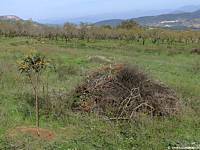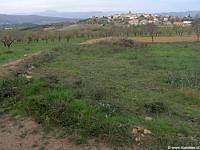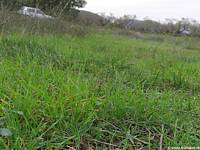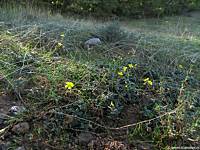|
|
Nature
Switched On
|
|
|
introduction |
2006 October 28 & 29, Saturday & Sunday The autumn is a good moment to plant shrubs. Our idea was to limit ourselves to native species as far as possible. For one reason we are obliged to use them because the terrain is in a rural area but it is also the more ecological option: native species usually attract more wildlife, they are better adapted to the local conditions and they resist better all kinds of deseases and plagues. I even think that it is also very often the more esthetical option: a wild vegetation gives a sensation of natural and spontaneous unitity which is difficult to maintain when introducing exoctic species. On the other hand we shouldn't exaggerate and be too
strict. The distinction between exotic and native is not always
clear. The walnut tree was introduced by the Romans more than 2000
years ago. Is it native? Many fruit trees or trees with other uses
have the same kind of background and they are permitted in rural
areas.
|
|
|
|
||
|
An 'illegal inmigrant',
Mespilus
japonicus (Japanese Medlar) grafted (on Hawthorn ?) to resist
droughts 29 Oct. 10:32 |
||
Shrubs that are native are
Corylus
avellana
(Hazelnut) and
Sambucus nigra
(Common Elder)
which we bought in a local gardencentre. These are
shrubs that need a certain soil humidity so success is not
guaranteed. I planted the Hazelnut near the edge of the wood to have
some shade. In this part I wou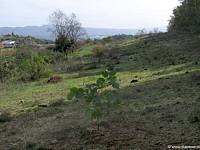 ld
also like to stimulate the development of a transition zone between
the wood and the grassland. ld
also like to stimulate the development of a transition zone between
the wood and the grassland. I planted the Common Elder in a lower area. If it starts to thrive I will take cuttings to get more shrubs and form a hedge on the oriental border of the terrain.
|
||
|
Corylus
avellana in the central, higher part of the terrain. It will certainly need some watering in summer in the first year. 29 Oct. 10:34 |
||
This weekend was also dedicated to
the control of the brambles. Here in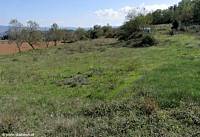 the western part (as in other
parts)of the terrain they were
invading the area and I decided to cut them down with some garden
scissors, something I will have to repeat a couple of times, I
suppose. I will let them grow on the border with the approach path
on the left where already some brambles grow together with
Prunus
spinosa (Blackthorn). the western part (as in other
parts)of the terrain they were
invading the area and I decided to cut them down with some garden
scissors, something I will have to repeat a couple of times, I
suppose. I will let them grow on the border with the approach path
on the left where already some brambles grow together with
Prunus
spinosa (Blackthorn).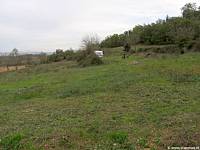
(The heap of fine sand is located more or less in the frontdoor of our future house)
|
||
|
Situation before cutting two
weeks ago. The brambles (at the bottom) still not high and easy to
cut. 14 Oct. 13:29 |
||
|
After cutting, looking southeast on the western
part of the terrain 29 Oct. 17:14 |
||
|
Plants that will now have the opportunity to colonize this
|
The same area but now
looking to the northeast. |
|
|
Holcus lanatus forming a thick turf in the lower
western part. |
The grass responsible for the fresh
green colour in this zone of the terrain
|
|
|
introduction
|
Helianthemum oelandicum
(Alpine
Rockrose) also forms carpets
but on the higher, central parts of the terrain 28 Oct. 16:17
|
